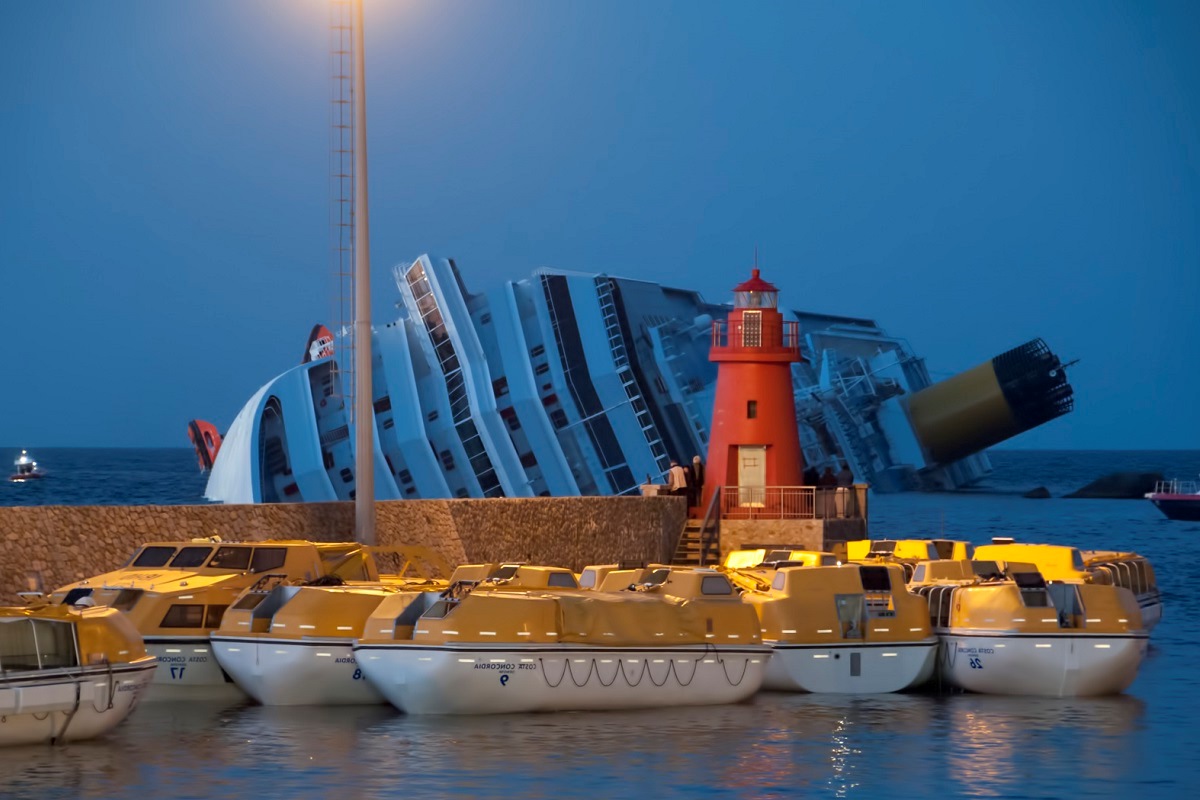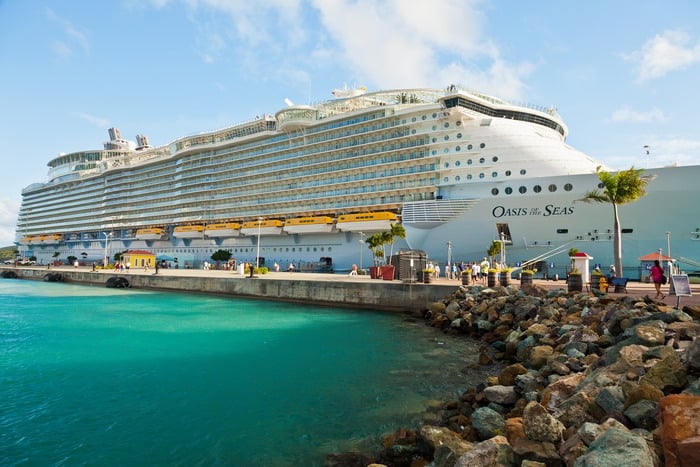Table Of Content

This capacity includes both passengers and crew members, ensuring that everyone can be safely evacuated in an emergency. Additionally, these lifeboats must be arranged in a manner that allows for safe and efficient launching, under the supervision of trained crew members. A lifeboat or liferaft is a small, rigid or inflatable boat carried for emergency evacuation in the event of a disaster aboard a ship. Recreational sailors usually carry inflatable liferafts, though a few prefer small proactive lifeboats that are harder to sink and can be sailed to safety. The International Convention for the Safety of Life at Sea (SOLAS) is the main regulatory body responsible for setting standards and regulations related to lifeboat safety on cruise ships.
Crew on Icon of the Seas cruise ship rescues 14 people stranded at sea - NBC News
Crew on Icon of the Seas cruise ship rescues 14 people stranded at sea.
Posted: Thu, 07 Mar 2024 08:00:00 GMT [source]
The capacity of each lifeboat
As we have explored in this article, lifeboats serve an essential role in providing a means of escape in emergency situations such as ship evacuations, sinking ships, or search and rescue operations. They offer a reliable form of transportation to remote areas and provide a sense of security in the unpredictable maritime environment. It is important to note that while lifeboats are an essential safety feature on cruise ships, they should never be relied upon as the only means of ensuring safety. Cruise ship operators have numerous safety protocols in place, including fire suppression systems, watertight doors, and thorough crew training, to prevent emergencies from occurring in the first place.
How does a lifeboat look?
Freefall Life Boats are used to provide a fast escape for a crew who is in danger. When a Captain gives the crew the call to the abandoned ship, the Crew and Ship’s personnel enter the Boat and secure themselves to the seats with belts, and close and secure the hatch of the boat. The Liferaft can never be opened or tampered with by the crew or any personnel for the Cruise Line. On-site inspections certify all mandatory equipment on the Boats and ensure that all the required contents are there.
Lifeboat Requirements
Following instructions from crew members is crucial to ensure a swift and organized evacuation in case of an emergency. Continuous monitoring, evaluation, and improvement of lifeboat configurations are necessary to adapt to evolving challenges and provide an optimal safety environment for all those on board. The world’s largest inflatable lifeboat has completed physical tests required for classification.
Training and Drills
In conclusion, Carnival Cruise Line goes above and beyond to ensure the safety and security of its passengers and crew members. So, set sail with Carnival Cruise Line, knowing that your safety is their top priority. It’s important to note that while the lifeboats are designed to accommodate a specific number of individuals, they are not intended for extended periods of use. Their primary purpose is to transport passengers and crew to a place of safety until further assistance can be provided. In the event of an emergency, it is essential to follow the instructions of the crew and use the lifeboats as directed to ensure the safety and well-being of all individuals on board. Beyond SOLAS, there may be additional regulations at the regional or national level that cruise ships must adhere to, depending on the routes they operate in and the countries they visit.
Exist restrooms aboard lifeboats?

These regulations make sure that all ships have the necessary safety equipment onboard, and regular safety checks and crew training take place. As you embark on your next cruise adventure, take comfort in knowing that the presence of well-maintained lifeboats and the meticulous adherence to safety regulations provide you with a safe and secure voyage. So, set sail with confidence and enjoy the remarkable experiences that await you on the open sea. The regulations require that each side of the Ship have enough accommodations for 37.5 % of the total number of persons on board. Inflatable or ridged Liferafts must accommodate the remaining 25% of passengers and crew. LIfeboat technology and requirements are just one component of what makes cruising among the safest ways to vacation.
Passengers see dramatic raft rescue from cruise ship balcony: 'Heart-wrenching experience' - FOX 35 Orlando
Passengers see dramatic raft rescue from cruise ship balcony: 'Heart-wrenching experience'.
Posted: Thu, 14 Dec 2023 08:00:00 GMT [source]
Lifeboats on Cruise Ships: Safety, Capacity, and Amenities
In the front center of the boat, above the diesel engine, there is the command console from where the boat’s pilot will ensure that everybody reaches safety. An off-load release requires the weight of the lifeboat to be off the hook. In addition to the regular inspections, the IMO has also recently amended the requirements for periodic servicing of life-saving appliances.
You could, for example, sell out every cabin on Norwegian Sky, with no single-occupancy staterooms, yet even with a full compliment of crew, carry only 2,903, despite her capacity of 3,349 passengers. Generally only a small percentage of 3+ capacity staterooms have more than two people in them. These factors combined mean that even if a ship is only meeting (rather than exceeding) the required capacities, they may have lifeboats for 1.5 or even 2 times the number of persons on-board during a “full” sailing. Cruise ships have enough lifeboats and liferafts to accommodate passengers and crew members.
And, there’s a limit to how many of these boats can be attached along the ship’s sides. They come equipped with canopies to protect evacuees from the elements, be it scorching sun, rain, or high waves. These canopies, just like those on hard-shelled lifeboats, have clear patches or windows to allow for visibility. It protects passengers from the elements, such as rain, wind, and sun, and also prevents water from entering the boat. There are typically windows or clear patches on the canopy to allow for visibility.
Some lifeboats are more capably equipped to permit self-rescue, with supplies such as a radio, an engine and sail, heater, navigational equipment, solar water stills, rainwater catchments and fishing equipment. Lastly, lifeboats supply essential first-aid supplies for treating injuries and fulfilling medical needs during survival situations. These first-aid kits come in waterproof cases to ensure their contents remain usable and protected from the elements. Partially enclosed lifeboats can hold a similar number of passengers to enclosed lifeboats, depending on the design. Modern lifeboats are carefully constructed for optimal safety, ensuring quick and efficient evacuation in an emergency.
Furthermore, the crew undergoes comprehensive training in a variety of emergency scenarios, including abandoning ship procedures. This involves proper operation of lifeboats, understanding the use of life-saving equipment, and conducting search and rescue operations if necessary. By investing in ongoing training and continuous improvement, Carnival Cruise Line maintains the highest safety standards for everyone on board. By conducting regular lifeboat training and drills, Carnival Cruise Line ensures that both crew members and passengers are well-prepared to handle emergencies.
The primary international regulation that governs lifeboat requirements is the International Convention for the Safety of Life at Sea (SOLAS). SOLAS is a treaty developed by the International Maritime Organization (IMO) and sets out minimum safety standards for ships, including rules for life-saving appliances like lifeboats. The first lifeboats were simply small boats with open tops and oars for passengers to use for propulsion. Prior to modern compact engine designs rowing was the only way of controlling a small craft other than sailing. This presented some obvious challenges, as even with adequately strong persons, synchronous rowing is a skill so difficult that even Olympians use a coxswain. Technology however brought forth solutions such as the Fleming Gear, allowing passengers to simply push and pull levers that drew a screw (propeller), combining the uncoordinated strength of rowers.
Additionally, lifeboats must be equipped with propulsion systems or be designed to be easily maneuvered with oars, ensuring that they can be navigated to safety if the ship becomes incapacitated. The testing and inspections continue even after a lifeboat is delivered to the shipyard for installation on a vessel. Like any equipment, lifeboats may experience wear and tear and degradation over time due to weather, time, and use during the cruise ship’s lifetime. For this reason, SOLAS stipulates that lifeboat training and inspections must occur regularly. Most cruise lines offer the safety drill via passenger TV for some time following the initial demonstration. Many cruise ships also provide virtual muster drills through the cruise line app.
There must be enough capacity for at least 37.5% of passengers and crew to be accommodated in lifeboats on each side of the ship. Lifeboat drills and procedures play a crucial role in preparing passengers and crew members for emergencies. These drills familiarize individuals with the location of their assigned lifeboat stations, embarkation procedures, and emergency communication systems. Through regular practice and training, passengers and crew members gain the confidence and readiness needed to respond swiftly and appropriately during a crisis. By adhering to a comprehensive maintenance and inspection program, cruise ship operators can identify any potential issues or deficiencies in the lifeboat systems. Timely repairs, replacements, and updates can be implemented to maintain the highest level of safety for passengers and crew members.
During maintenance, the ship’s number 12 lifeboat unexpectedly detached from its davits and fell into the water. Fortunately, no passengers were onboard the lifeboat, and no one reported any injuries. However, this incident highlights the potential risks of lifeboat operations on cruise ships.
Case studies have provided insights into the practical implementation of lifeboat requirements, showcasing how cruise operators adapt to different ship sizes, types, and operational demands. Despite challenges such as space limitations and weight restrictions, cruise operators employ innovative solutions, incorporate technological advancements, and engage in knowledge sharing to overcome these obstacles. The stringent tests included ship sinking scenarios and a timed evacuation, which was achieved in less than 22 minutes.

No comments:
Post a Comment